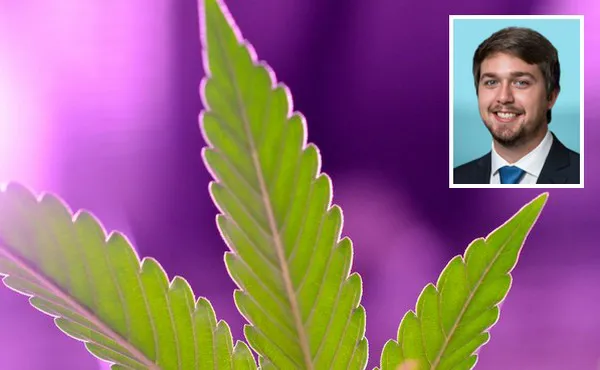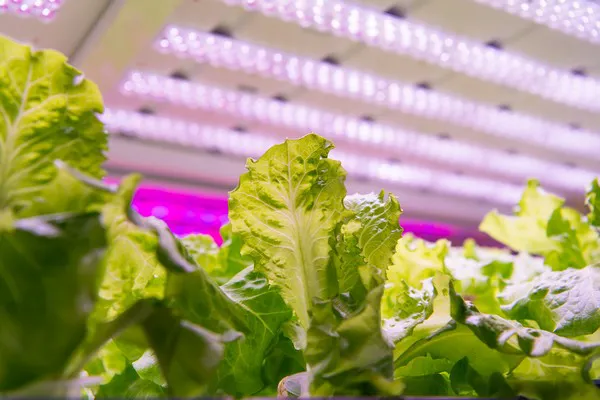Running a cannabis grow facility requires expertise across a range of disciplines, from business management and knowledge of horticultural techniques to facility operations. To the latter point, choosing the right lighting can be especially tricky. "While light emitting diode (LED) technology is a gamechanger in terms of saving electricity, not all LEDs are the right fit for every facility. Often, cultivators must wade through an ocean of information to make the right choice," says Kasey Holland, Technical Manager at DesignLights Consortium (DLC).
Kasey Holland
Consider that lighting manufacturers must obtain third-party testing for most families of fixtures currently on the market. With various aspects related to safety, performance, and durability assessed, this testing results in copious reports and data. For both facility operators and the utility energy efficiency programs that set levels of incentives for energy-saving fixtures, analyzing these data can require a significant investment of time and resources, Holland explains.
This situation is not unique to horticultural lighting. "In the early days of LEDs a little over a decade ago, energy efficiency programs faced similar challenges relative to comparing test lab results to determine incentives for lighting in other commercial sectors. The DesignLights Consortium (DLC) Qualified Products List (QPL) was created in 2010 to meet this need and has since served as a central clearinghouse for setting energy efficiency and other performance standards for solid-state lighting. In response to increasing energy consumption by an expanding controlled environment agriculture market (including legal cannabis), the DLC created the first technical requirements and QPL for horticultural lighting in 2018."
Growing by 54 percent in the past two years, the DLC's Horticultural QPL is now a searchable, filterable online resource that offers growers apples-to-apples comparisons of over 650 horticultural LED products simplifying the process of finding rebate-eligible products with the right performance features. "At least two dozen North American utilities require DLC QPL products to qualify for incentives, and others have incorporated the DLC's Horticultural Lighting Technical Requirements into their programs. Two states with cannabis-specific energy regulations (Massachusetts and Illinois) offer a regulatory compliance pathway via the DLC's Horticultural QPL," Holland adds.
Holland explains that this ability to verify manufacturers' efficiency claims matters in terms of individual companies' energy consumption, as well as the energy intensity and resulting carbon footprint of the entire industry. "A 2020 US Department of Energy report found that 'high-intensity sole-source farms' (largely commercially-licensed cannabis cultivators) were heavily reliant on metal halide or high-pressure sodium (HPS) lighting, with an LED adoption rate of only 11%. Converting the remaining 89% of fixtures to LEDs' overnight' would yield energy savings of 35% and save $310 million in annual electricity costs, according to the report."
"Fixtures listed on the DLC's Horticultural QPL are already at least 10% more energy efficient than HPS horticultural lighting. A major update to the DLC's Horticultural Lighting Technical Requirements (Version 3.0), now in draft form, would expand that further. Scheduled to take effect in January 2023, V3.0 would increase the efficacy threshold of QPL products, boosting potential energy savings by at least 20% while allowing the top 85% of current QPL products (in terms of photosynthetic photo efficacy) to remain listed," says Holland.
In addition, the proposed policy, which will undergo another round of stakeholder comment this summer, would:
- Introduce requirements for collecting and reporting application information of listed products to allow greater insight into listed products and support the development of "prescriptive/midstream" efficiency incentive programs;
- Introduce product-level dimming requirements for all products to enable more energy savings, promote device interoperability, and prepare for future energy demand response systems and programs;
- Effective in October 2023, introduce a surveillance testing policy to monitor the validity of data and information submitted to the DLC to protect the integrity and value of the QPL.
With horticultural lighting among the fastest growing segments of the electric load for many North American utilities, the DLC is eager to implement this roster of changes that will enable growers to keep up with innovative technologies that improve crop yields and minimize energy consumption.
For more information:
Design Lighting Consortium
www.designlights.org
